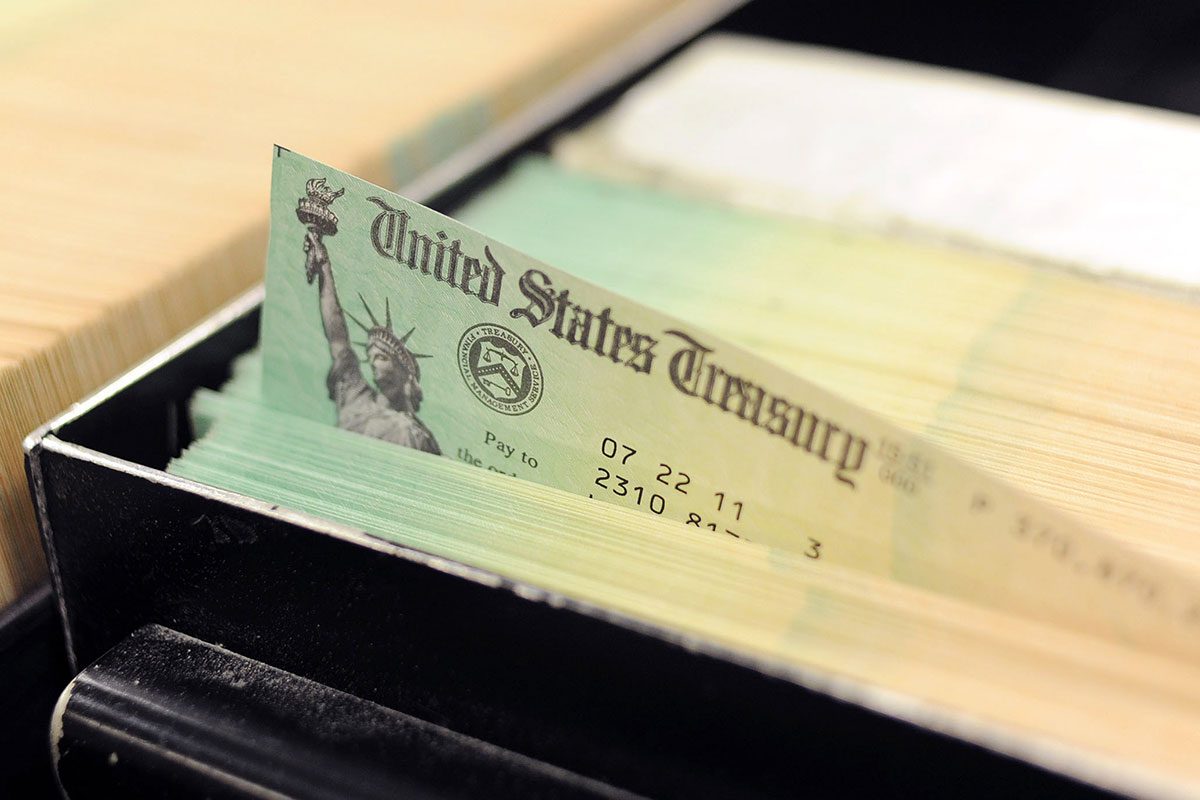Some seniors may need a crash course in technology

Your Social Security Check Will Look a Lot Different This Fall—Here’s What to Know

Most of us remember when we wrote checks for almost everything—at a deli, paying bills and to the babysitter—but now we mostly tap to pay for services and have debits drawn from our bank accounts or credit cards. The babysitter? They’ll take Venmo or PayPal, thank you very much.
And now, the government announced it’s making a big change when it comes to some seniors’ preferred way of Social Security benefits payments. Read on to find out what the change is and how your payments might be affected. We chatted with Louis Hoch, CEO of Usio, a leading U.S. payment solutions company, for more information on what recipients need to know.
Get Reader’s Digest’s Read Up newsletter for more news, wellness, travel, humor, tech, cleaning and fun facts all week long.
How are Social Security checks changing?
The Social Security Administration (SSA) is joining the digital payment party and will no longer issue paper checks for benefit payments starting in the fall. Many recipients of Social Security checks aren’t as tech-savvy as younger generations, and this switch may seem intimidating, but it doesn’t have to be.
The switch should be seamless, and once users see how convenient it is to have their monthly Social Security benefits deposited right into their bank account, the change may even be welcomed.
When will the change take effect?
The change to electronic payments is slated to take effect on Sept. 30, 2025. However, Hoch says it’s unclear whether the SSA and other agencies and departments will be ready by that time. “The Treasury Security is required to submit a comprehensive plan (with input from individual departments) prior to this deadline,” Hoch says.
How many Americans will this affect?
“Less than 1% of beneficiaries currently get paper checks,” says the SSA website. “Out of more than 68 million Social Security benefit recipients, fewer than 500,000 receive paper checks,” Hoch says.
Why is the government phasing out paper checks?

Per the SSA announcement, “This change is part of a broader government-wide initiative to modernize payment systems and enhance service delivery.” The switch to electronic payments comes with several benefits, according to the SSA.
What are the pros of electronic payment methods?
The pros of electronic payments are:
- They’re less expensive than printing and mailing checks. “According to the U.S. Department of the Treasury, issuing a paper check costs about 50 cents, whereas an EFT [electronic funds transfer] costs less than 15 cents,” reports the SSA.
- They’re less labor-intensive, and it’s easier to automate payment processes.
- They’re more convenient for most recipients—no need to go to a bank and deposit a check.
- They make it potentially easier to recognize, investigate and mitigate fraud. “Paper checks are 16 times more likely to be lost or stolen compared to electronic payments, increasing the risk of fraud,” says the SSA.
What are the cons of electronic payment methods?
The cons of electronic payments are:
- Individuals without a bank account will need to open one or will need a Direct Express card, provided by the government.
- Elderly individuals and those with special needs may have difficulty using banking websites, apps or other technology.
- Fraud can still be committed with electronic payments.
How can those receiving paper checks prepare for the switch?
The SSA is sending letters to those recipients who are still receiving paper checks, further explaining the change. Those who don’t have bank accounts may want to open one now to prepare for the switch. Then, when the time comes, the SSA promises that “our technicians are ready to assist.”
RELATED:
- New Report: This Is the Happiest State for Retirees
- These Are the Most and Least Stressed States in America—Which May Explain a Lot About How You’re Feeling Right Now!
- New Report: This Is the Most Welcoming City in the U.S.
About the expert
|
Why trust us
At Reader’s Digest, we’re committed to producing high-quality content by writers with expertise and experience in their field in consultation with relevant, qualified experts. We rely on reputable primary sources, including government and professional organizations and academic institutions as well as our writers’ personal experiences where appropriate. We verify all facts and data, back them with credible sourcing and revisit them over time to ensure they remain accurate and up to date. Read more about our team, our contributors and our editorial policies.
Sources:
- Louis Hoch, CEO of Usio, a leading U.S. payment solutions company; email interview, July 17, 2025
- Social Security Administration: “Social Security Transition to Electronic Payments—What Beneficiaries Receiving Paper Checks Need to Know”





















